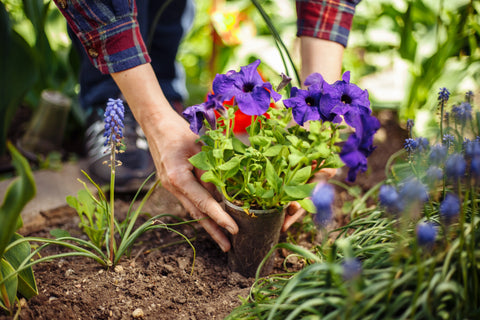Calatheas are some of the most beautiful houseplants you can place in your home. With their dramatic patterns, vivid colors, and graceful leaf movement, they add a touch of tropical beauty to every space. However, they do require a bit more care due to their sensitive nature. Too much sunlight can scorch their fragile leaves, but too little will cause them to fade out their beautiful patterns.
This manual will explain the best lighting conditions for Calatheas, typical light-related issues, and practical tips on how to keep your plant happy.
A complete guide to Lighting Up Your Calatheas World
Calatheas are the botanical equivalent to art-dramatic, lush, and the center of attention. Known for their bold patterns and vivid foliage that fold up each evening like prayer hands. These tropical beauties are impossible to ignore.
But behind their beauty is a delicate balance-primarily when it comes to lighting. However, with the proper steps your calathea will thrive!
In this guide we'll show you:
- Lighting requirements
- Proper placement
- Common signs of stress from improper lighting
- How to adjust lighting with the seasons
About Calatheas
Calatheas belong to the family Marantaceae, commonly known as "prayer plants" because as the evening descends, their leaves fold upwards, giving the impression of hands carrying out a prayer. Calatheas originated from Central and South American humid forests' shady floors. Their natural growth environment reflects filtered, dappled light as opposed to direct sunlight.
Calatheas are a perfect choice for those with furry friends at home. They symbolize new beginnings making them an ideal gift for weddings, anniversaries, and housewarmings.
Some of the most common types are:
- Calethea Makoyana: Known as the peacock plant, is mainly known for its lacy, feather-like patterns.
- Calathea Rattlesnake: A long, curly leaf with dark green stripes above and purplish color inside the leaves.
- Calathea Orbifolia: Large round-shaped leaves with a soft silver-green marking.
How Much Light Does a Calathea Need?
Calatheas prefer bright or medium indirect light because they are badly harmed by direct sunlight since it causes their sensitive leaves to lose color, curl, or be covered by a brown spot. For example, if you grow them outdoors, then locate them in an area that is shaded but would still have access to gentle morning sun for about 4 to 6 hours.
If unsure about the home light condition, you can place your hand between the plant and the source of light, and it casts a shadow, albeit a soft one; then it is suitable. If the shadow is hard, it means that the light is too powerful, whereas if it casts no shadows, the light may be too dim.
Best Placement for Calatheas
Simulate the natural rainforest environment by placing your calathea in front of a window facing either north or east. These spaces trap brief afternoon rays of sunshine and benefit your plants with some morning sunshine. When placing your plant before a south—or west-facing window, use sheer curtains to filter the harsh sunlight and protect the leaves. It is one of the best plants for the living room.
Here are some ideas:
- Several feet away from a bright window
- Next to a window with sheer curtains
- In a well-lit, humid bathroom
- On a shaded patio or balcony
Can Calathea Grow Low Light?
Calatheas can generally tolerate low light, but they perform the worst in such circumstances. A lack of light often causes naturally slow growth and less vibrant leaf patterns. To correct this, grow lights can provide sufficient brightness, which would be very beneficial if natural light is limited.
Signs of Low Light Problems
- Fading or dull leaf patterns
- Slower growth
- Smaller leaves
- Drooping foliage
- Stagnation in leaves (prayer plants tend to move up and down due to light variations)
Solutions for Low Light
- Place your plant nearer a bright, indirect light source.
- Employ a full-spectrum grow light for additional brightness.
- Don't put it in dark places with no exposure to natural or artificial light.
- Clean the leaves so they can absorb maximum light.
Can Calathea Get Too Much Sun?
Too much direct sunlight will harm your plant. Calatheas prefer to grow under the protection of trees, so direct sunlight will burn their leaves and parch them. As soon as you spot the results of over-sun, transplant your plant into a less sun-filled area.
Symptoms of Too Much Sun
- Color loss in the leaves
- Browning, crisp edges
- Curled-in leaves
- White, bleached foliage patches
- Patches of sunburn
Repairs for Excess Sunlight Exposure
- Move the plant to a location with filtered or indirect light.
- Utilize sheer curtains to filter out intense sunlight.
- Raise humidity by misting the leaves or running a humidifier.
- Water frequently, but do not overwater, as dryness can exacerbate leaf damage.
Keeping the Right Light Conditions All Year Round
Seasonal changes may impact the level of light your Calathea is exposed to. Here's how to modify care during the year:
- Spring and Summer: When the sun is at its zenith, place the plant farther from the windows or shield it behind curtains to filter direct sunlight.
- Fall and Winter: Since natural light is dimming, you can place the plant near a window or use a grow light for extra assistance.
- Artificial Light: In regions with long, dark winters, a grow light provides the necessary glow for maintaining healthy growth. Preferably, pick an LED to produce light that emulates daylight.
Last-minute Tips for Your Healthy Calathea
- Every few weeks, rotate your plant for even growth.
- Avoid draughts from heaters or air vents. Hot, dry air will scorch the leaves.
- Place mist leaves on a pebble tray, or use a humidifier to maintain humidity.
- Check the moisture of the soil regularly. Calatheas enjoy humidity but dislike wet soil. Allow the top inch to dry out before watering again. Do not overwater them.
- Use distilled or rainwater if you have it, as tap water causes mineral buildup, leading to brown tips on the leaves.
Final Thought
Calatheas are beautiful plants that love the right amount of light. Keep them in bright indirect light, away from direct sun, and rotate them as necessary, and you will then be able to enjoy the magnificent foliage throughout the year. Watch the leaves for signs that tell you when to adjust their light conditions; with a little bit of care and attention, your Calathea will reward you with rich, beautiful growth for years to come.
Why Buy Plants From Eureka Farms?
Established in 2003, Eureka Farms stands as a testament to our family's unwavering commitment to horticulture. As a licensed nursery, we have become a trusted source for ornamental, exotic, indoor and outdoor plants. Our mission revolves around providing our customers with the finest and healthiest indoor and outdoor plants, all while maintaining a steadfast dedication to environmentally responsible and sustainable farming practices. Whether you're upgrading your backyard with stunning topiary trees and hedges or turning your porch into a leafy oasis, we’ve got everything you need to spruce up your space.
Shopping is easy:
- Browse our online collection – Discover plants by family, size, or purpose.
- Read our detailed care guides – We make it easy to find the perfect plant for your home or garden.
- Place your order with confidence – Our plants are carefully packed and shipped directly to your door.
Ready to bring some green into your life? Explore our houseplant collection and take home the perfect plants to refresh your space.
Happy planting, from all of us at Eureka Farms!



